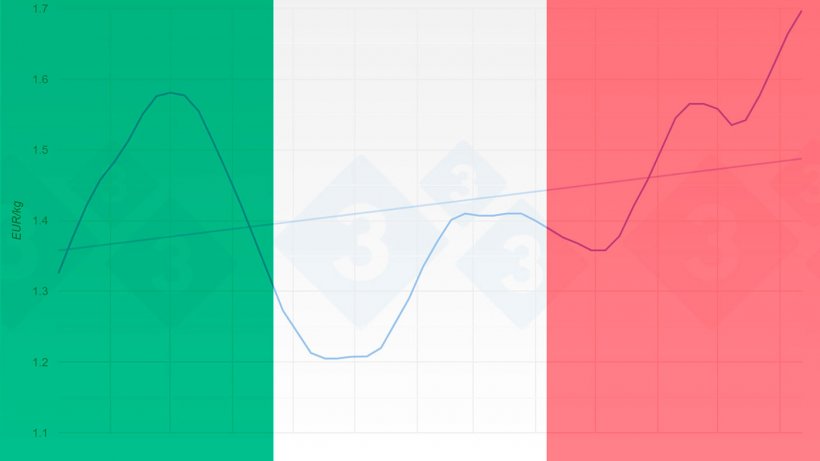The determination of the price of pigs has always been the most important aspect of the relationship between suppliers (producers) and buyers (slaughterhouses). The pig marketing modalities have been changing according to the evolution of the organization and the progressive concentration of farms and slaughterhouses. Currently, the pig price in Italy is set by a Single National Commission (CUN), which came into force on April 15, 2011. In 2012, the CUN regulation for slaughter pigs introduced the distinction between the pig prices in the protected market and those of generic pigs. Starting January 15, 2015, the CUN price for piglets was established in the protected market and, finally, the CUN price for sows was introduced.
The CUN is made up of 10 commissioners (5 members and 5 alternates) representing the selling party and 10 commissioners (5 members and 5 alternates) representing the buying party. VAT (value-added tax) of 10% must be added to the final value. Depending on the regime applied, VAT taxation must be offset (purchases/sales, ordinary regime) or collected ("Forfettario" regime or flat rate regime for independents) and paid to the State in the amount of 0.5%. The starting price is agreed upon. Obviously there can be deductions for non-conformities (weight, quality of ham, yield, etc.) which can vary from a few euros to thousands of euros.

The commissioners are appointed by professional organizations and trade associations representing the agricultural sector, the processing industry, trade, and distribution. With respect to taxation, the "Borsa Merci Telematica Italiana" (BMTI) acts as the secretariat, coordinating weekly meetings, preparing market analysis documents with ISMEA (Institute of Services for the Agricultural Food Market) and disseminating results (price lists, reports, market sheets, minutes) through the website www.cunsuini.it. The operational procedures establish an orderly series of steps to agree on the definition of the indicative price for the following week's sales. The starting point is the analysis of numerous data relating to supply and demand for both pigs and pork, European prices, foreign trade and domestic purchases of pork and sausages, etc. In addition, procedures are foreseen to ensure that, in any case, through the Guarantee Commission, a price or range of prices is formulated if the parties do not reach an agreement.
It can be said that the national model represented by the CUN is an important organizational adaptation to the evolution of the swine industry and that this innovation has definitely unified the use of a single reference price at the national level, bringing transparency to the relationships between the operators of the different production areas. It should be noted that the price paid for pigs marketed, based on live weight, is the result of the sum of the CUN price and premiums (which can vary from 5 to 15 cents) and/or deductions, agreed upon by the parties, based on the volumes sold and the conformity of the product, which in the case of pigs for PDO (protected designation of origin) are established by the specifications of Parma and San Daniele hams (tattooed ham, H URO carcasses, ham defects, etc.). In addition, the regulation aims to prevent inequalities and ensure greater transparency through the publication of the minutes of the meetings. In this way, it also ensures some form of protection for the agricultural part which, being more fragmented, is weaker.
Clearly, price setting is always the result of a compromise between two parties with bargaining powers that are not always in balance. Producers can assert their bargaining power when the supply of pigs is reduced compared to slaughterhouse demand. Weekly prices usually respect the law of supply and demand, CUN regulation can only mitigate the most negative effects, but cannot ensure prices that circumvent the law of the market; in any case, it is adopted without exception by all operators in the supply chain.
Under the coordination of the Ministry and with the support of the BMTI, the organizations representing the supply chain can constantly monitor performance and propose corrective measures. Surely there is still room to improve the reliability of some information, for example the volume of pigs slaughtered weekly and their characteristics (weight, classification, etc.), and to make the comparison within the CUN more objective.



